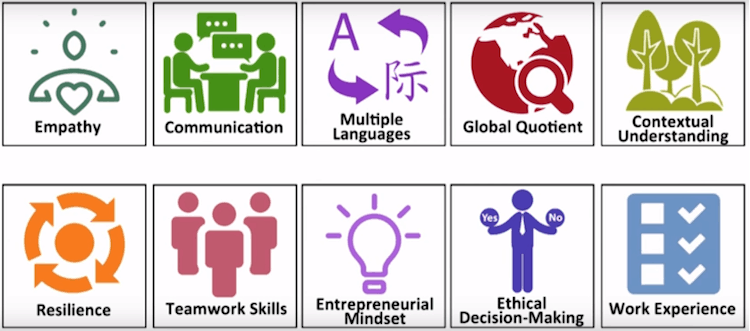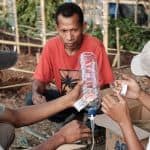Seven Questions for Career Seekers – Finding Your Niche in Sustainable Development
Editor’s note: This is the fifth and final post in a series exploring careers in social innovation and global sustainable development for science, technology, engineering and math (STEM) professionals. You can read the other posts here. The author discusses the issue in more depth in an ebook, available for free download here, and in his recent TEDx Talk (embedded below).
With the smorgasbord of careers in the sustainable development space, how do you find the right one for you? To find your niche, start by asking yourself these seven questions:
1. What problem do I want to solve?
I challenge you not to ask “What organization do I want to work for?” Your real question is “What problems do I really care about … that I am willing to make sacrifices for and devote a lifetime to … and who will provide me the best platform with the right tools, resources and networks to solve this problem?” Most careers in sustainable development require intense dedication and tenacity, and if you are not incredibly passionate about the problem you are solving, you will likely not make it through the blood, sweat and tears.
2. What’s my preferred engagement approach?
We can address any sustainable development challenge through a combination of policy modifications, advocacy, activism, educational interventions, technological tools and business operations. For example, Peggy Sheppard is the cofounder of WE ACT, a nonprofit that empowers residents to engage in activism for environmental justice, working toward improving conditions in Northern Manhattan that affect health, safety and quality of life. She prefers to effect social change through activism and advocacy. These approaches can have a large impact, but require significant energy over time to mobilize the community and get those in power to listen. On another side, Greg Lank works for the Environmental Protection Agency, where he directs resources to support university students who want to research and implement environmental innovations. This takes him a step back from direct engagement, but he loves to empower the next generation and see their impact multiply.
There are many valid approaches to solve the same problem, but which one excites you more than others? Some approaches maintain the status quo, provide temporary solutions or lead to incremental improvements. Others are truly transformative – perhaps solving the problem once and for all. Any of these might involve direct action or take an indirect approach by influencing external stakeholders. Which methods align best with your values, your worldview and your philosophy of engagement?
3. Do I want to work with people or systems?
You can work on a challenge (e.g., global health) through the United Nations, a national government, a regional nonprofit, a private sector actor or even one-on-one with rural communities – and every approach is equally valuable. Innovation that is not “on the ground” with the people can have a much larger impact but is harder to assess, iterate and implement. You might not even know if the approach is actually working. On the other end of the spectrum, working directly with people can give you immediate feedback and a firsthand view of the human impact, but that impact is constrained to a smaller population.
Dr. Douglas Postels spends several months each year working in Malawi to treat children with neurological issues. In doing so, he focuses on uncovering the underlying causes and discovering new treatments for African children in coma while offering medication, rehabilitation and physical therapy to many others. As a doctor and researcher, Postels has found his own balance between investigating underlying causes and working directly with patients.
Steve DeSandis prefers to tackle health issues in developing countries by working with systems. Working for the Clinton Health Access Initiative, he ensures that vaccines are distributed safely by working with manufacturers of refrigerated vehicles that move between central stores and remote locations throughout Africa, Asia and South America. While Postels gets to work face-to-face with hundreds of patients, delivering high value to each one, DeSandis provides support for preventing disease for tens of thousands of people he will never meet. The sustainable development space could not function without both, but which do you want to undertake? Where on the people-to-systems spectrum do you want to work, and how important is seeing your impact firsthand versus affecting a large number of people?
4. What type of organization excites me?
Some people love working for local nonprofits because they can directly engage with people in their communities. Others find the constant need to fundraise and talk with donors for a small organization distracting. Some people love working in for-profits because of the vast resources and networks. Others find that the presence of a business model does not align with their personal values. Some people love working in academia because of the scholastic freedom to explore and the opportunity to shape young minds; others hate the pressure to publish or perish. Some people love working for the federal government or multilaterals because of the enormous potential for scale, while others cannot stand the glacial speed at which they work and the elaborate rules. Some people want to be in full control of their organization and choose to be entrepreneurs; others do not want to take on this risk. Which type of organization excites you?
5. What work culture are you most comfortable with?
Do you want to work within a hierarchical structure or let everyone have equal say at a roundtable? Would you rather work independently or in teams? Do you need to be sitting on a yoga ball in jeans with your dog, or do you prefer working in a suit and tie? Do you strongly value diversity in terms of gender, ethnicity, beliefs and personalities, or is it not a priority to you? Do you want to work 9-5, have flexible hours or telecommute? At the International Finance Corporation, Jason Lee works in an office in formal clothing and spends much of his time on the phone advising governments on how to structure public-private partnerships. In general, he works during normal business hours, but will extend his day due to extra demands and time differences. On the other hand, Mike Lin is the founder and CEO of Fenix International, where he tackles technical and financial barriers to off-grid energy in East Africa. This means he travels a great deal with largely varying hours, responsibilities, working environments and wardrobes.
While governmental organizations and multilaterals are generally more formal than corporations, which in turn are more formal than nonprofits, each organization has its own unique culture. These are also overlaid with geographical patterns and other broader cultural norms. Check out Glassdoor and network with people to get a feel for the culture at organizations you are considering. Ultimately, your alignment with an organization’s culture can make all the difference for your fit and satisfaction in your job. Identify platforms that align best with your values, worldview and way of getting stuff done.
6. What role do I want to play?
First, the role you play depends on what positions are available. That said, it is typically easier to move around and take on different roles in large organizations than in smaller ones. Still, to think that you will start as a programmer at Microsoft and ultimately become the head of corporate social responsibility (CSR) is a bit of a stretch! It’s best to be realistic and have a candid conversation with colleagues about lateral transfers. Sometimes you can even sell a new role to an organization. That’s exactly what David Fields did – he convinced the National Peace Corps Association that they needed him to aggregate various STEM resources from the Peace Corps and the international communities they have served. What roles align best with your strengths and desires? Which organizations have these roles to play, or might benefit from them?
7. What are the most relevant degrees, experiences and competencies?
While the degree and experience appropriate for each organization and position of course varies, the majority of sustainable development professionals I interviewed had a graduate education. They identified 10 professional competencies as essential to thrive in this space:

You can and should hone the first nine skills as you gain relevant work experience that enables your personal growth and diversifies your portfolio. Test-drive different organizations to explore firsthand different engagement approaches, levels of abstraction (on-the-ground or from 30,000 feet) and work cultures. Get your foot in the door at different organizations by building a strong portfolio and network and then leveraging both. Very few opportunities are advertised; most are found through extended networking. Build your network by attending conferences, workshops and open-houses; conducting informational interviews; and maintaining close relationships with all the people you have ever met or worked with. As you advance in your journey, remember to share your lessons with others and pay it forward.
Khanjan Mehta is the founding director of the Humanitarian Engineering and Social Entrepreneurship Program at Penn State.
Photo by VolunteerMatch.org via Flickr.
- Categories
- Education



